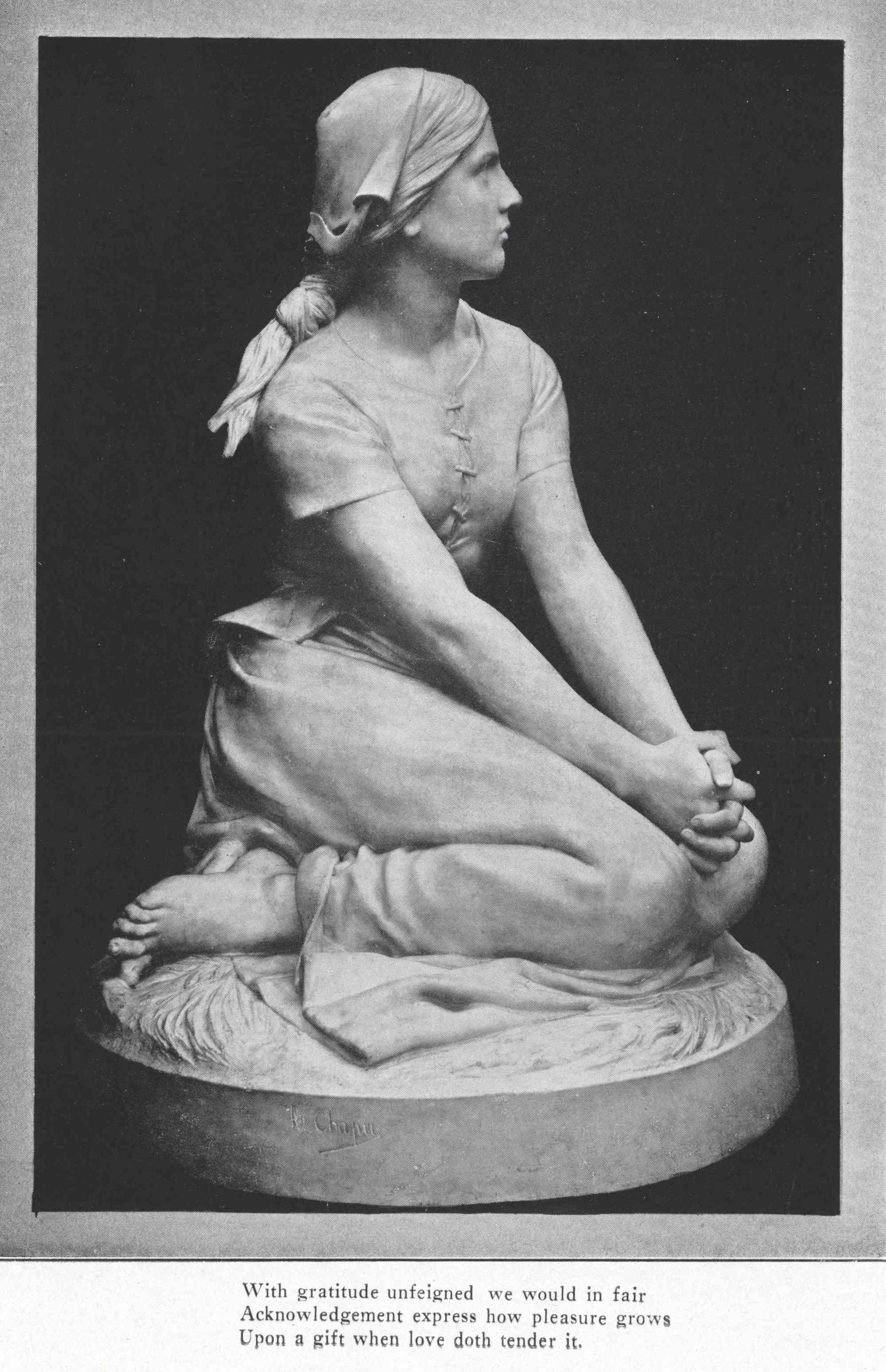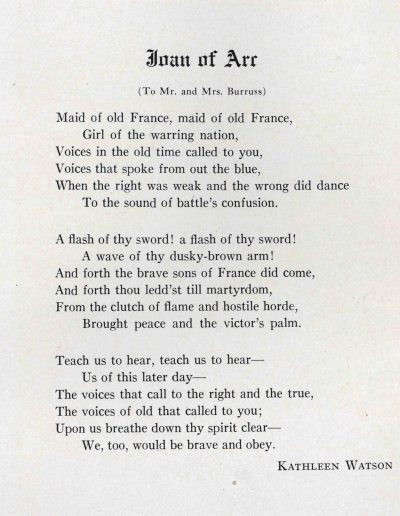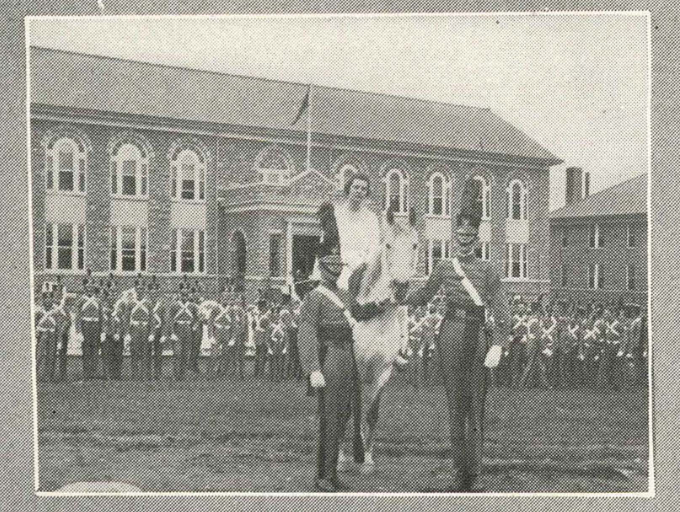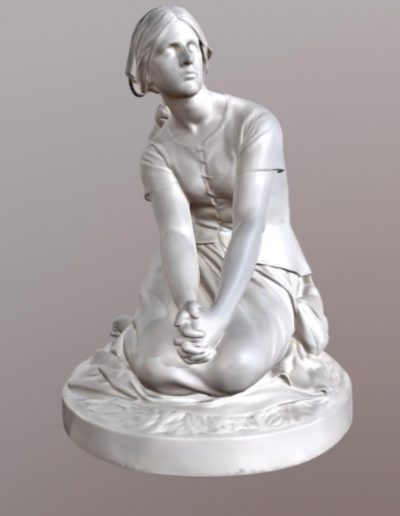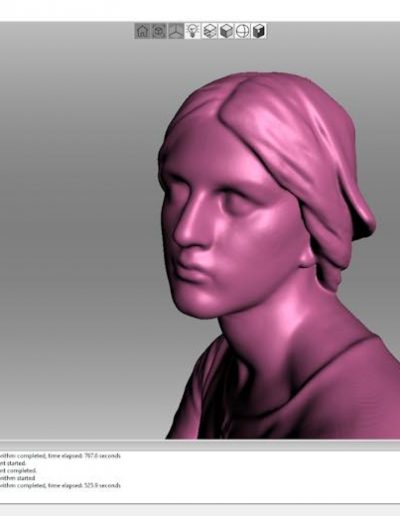Joan of Arc
Schoolma’am, 1928 A poem about St. Joan of Arc and dedicated the President and Mrs. Burruss, written by Kathleen Watson (Class of 1917)
1918 Schoolma’am Miss Pauline Callender acting as Joan of Arc on a white horse for the Liberty Loan Parade. Flanked and backed by students from Augusta Military Academy.
1918 Schoolma’am Miss Pauline Callender acting as Joan of Arc on a white horse for the Liberty Loan Parade. Flanked and backed by students from the State Normal School for Women in their battalion regalia.
The “Maid of Orleans” has a long and storied history at James Madison University, serving as an icon for the school mainly during its all-women’s college days. Joan of Arc was a young woman who served as a trusted advisor to the Dauphin of France and led the French armies in battle to end to the Hundred Years War. The statue of Joan which has been an iconic campus mainstay for over 100 years is a plaster-cast copy of Henri Chapu’s original marble statue depicting the Catholic saint in the Louvre. Four copies of the original statue were gifted to the four women’s teacher colleges of Virginia, now known as James Madison University, University of Mary Washington, Longwood University, and Radford University. Joan of Arc was presented to our campus in 1917 by President and Mrs. Julian Burruss, with the couple stating that they wished for Joan’s courage, leadership, and holiness to serve as an “inspiration to all womankind.” The United States formally entered WWI that same year, and the gift of a larger than life-size statue of our ally’s patron saint and national hero synthesized the patriotism and industry sweeping through the campus in support of the war. Students were organized into battalions (with President Burruss himself commanding), economy was admired to provide for the war effort, and at least one student, a Miss Julia McCorkle, served heroically in the hospitals of France.
As patron saint of France, Joan’s character was chosen as mascot of the French Club. The Club centered their yearbook photographs around the statue for many years. In the 1918 Schoolma’am, Miss Pauline Callender personified the saint on her snow-white steed. Callender reenacted Joan again for Harrisonburg’s May 1918 Liberty Loan Parade, and is shown flanked by cadets who “marched in splendid array” from Augusta Military Academy.
Jeanne d’Arc has had a semi-nomadic life on campus. She has taken up residence in Alumnae, Converse, Duke, and Wilson Halls, as well as a short appearance at the Harrisonburg-Rockingham Historical Society, before finally reaching her current home in the old lobby entrance to Carrier Library. The statue was virtually forgotten about and almost sold after it was placed in storage during the 1970s, but an alumna recognized Joan and advocated for her to be taken off the auction block. Joan spent the next twenty years in the lobby of Duke Hall. After a restoration in 1996 due to peeling paint and decades of student graffitti, Joan moved back to her long-term home in the old entrance lobby of Carrier Library.
Though Joan has decreased in popularity with the student body since the school’s switch to full co-educational status, she is still emblematic of the university’s storied history. Recently Joan has been a part of Innovation Services technology, as 3-D scanners were used to digitally reconstruct the statue layer by layer. Hopefully one day these 3-D images can be used for virtual exhibits or other educational technology. You can explore the 3-D rendering more below and also here!
Due to JMU’s genesis as a school devoted to the education of women, our community should be proud of our connection to a figure who, as President Burruss said in his 1917 dedication, “represents the high ideals of womanhood.”

